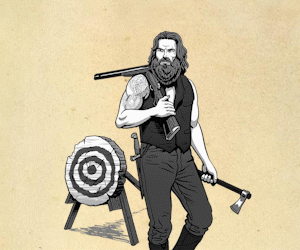We’re wrapping up a two-part series covering some common injuries. A couple of weeks ago I covered sprains in Part 1. Part 2 focuses on overuse injuries, which can cause repetitive stress injuries. Find yourself with a painful back, elbow, shoulder, or knee after that weekly game? These fun weekend activity-induced pains are overuse injuries. There are many common examples of overuse injuries. These include carpal tunnel, tennis elbow, “blackberry thumb,” tendonitis, and plantar fasciitis.
So, what is an overuse injury?
Generally, a repeated action causes these overuse injuries. A single action, repeated over time, especially when done incorrectly, can cause stress on the body. And eventually an injury. The more frequently you do the aggravating action, the more severe the injury becomes. These actions are typically from work or play. Sitting at a poorly positioned desk and even golf, video games, or running are common causes. Symptoms are caused by internal swelling and compression on your nerves. These symptoms include burning, tingling, weakness, and numbness.
You can measure your relief in hours and days if you take appropriate measures, though. Change the repetitive action to prevent irritation of the injury. Either use the body part in a healthier manner or change to a different activity altogether. However, continuing to subject the injury to the same repetitive action will slow your healing. The delay could even possibly cause that injury to never heal. If the injury continues to progress, it can lead to worse symptoms; like coldness, severe numbness, and a loss of function.
What can you do to treat overuse injuries?
You can avoid many common overuse injuries by learning proper methods for any exercise. It is just as important to ensure you are increasing your exercise slowly. You want to limit your increases to 10% each week over the previous week at a maximum. That includes both length of time and level of effort needed, combined. If you’re a total couch potato, don’t start by running for 10 minutes. Instead, start with a 10-minute walk daily. With weight lifting, don’t increase both the length of the workout and amount by 10% each in the same week.
 Physical therapists or occupational therapists can assess your activities and environment; ensuring you move in the safest way possible. Your insurance provider will generally cover your PT/OT costs with a referral from your provider. Small sidenote: Tell your primary care provider, “this injury is limiting me in the following ways:” followed by each limitation. This will be incredibly beneficial for you getting your insurance to cover the therapy. Make sure you tell your PT/OT what is being limited as well. Whether work, housework, childcare, sports, or sleep, the PT/OT can only help what they know about. Contact your employee health representative if you believe the injury is related to an activity required for your work. They can assess your environment and recommend ergonomic changes to your work area. Typically, you go through your Human Resources to handle this.
Physical therapists or occupational therapists can assess your activities and environment; ensuring you move in the safest way possible. Your insurance provider will generally cover your PT/OT costs with a referral from your provider. Small sidenote: Tell your primary care provider, “this injury is limiting me in the following ways:” followed by each limitation. This will be incredibly beneficial for you getting your insurance to cover the therapy. Make sure you tell your PT/OT what is being limited as well. Whether work, housework, childcare, sports, or sleep, the PT/OT can only help what they know about. Contact your employee health representative if you believe the injury is related to an activity required for your work. They can assess your environment and recommend ergonomic changes to your work area. Typically, you go through your Human Resources to handle this.
What else can you do?
Mechanics
Wear properly fitting gear. Don’t wear worn out shoes with no support. Also, your shoes should support the task (i.e., don’t wear Converse Allstars to play basketball). Ensure you put on any protective braces you might require for prior injuries.
Practice good body mechanics. Furthermore, try not to stretch and twist at the same time. Your body moves in very specific ways. Don’t fight biology.
Medication
While you’re recovering from overuse injuries, alternating pain medication between NSAIDs (ibuprofen, naproxen), and acetaminophen, according to the package instructions, can help with the discomfort.
Not Getting Better
If the overuse injury is not getting better after making your changes, surgery may become an option. Seek a professional’s opinion if attempting to change body position and resting the affected extremity doesn’t provide relief.
Disclaimer
MING and the author, Daniel Hardy, are offering generalized medical information for educational purposes. For health information about specific personal conditions, please see a local professional familiar with your needs. Also, do not start or stop a medication without a doctor’s advice and only start an exercise regimen if healthy enough.











